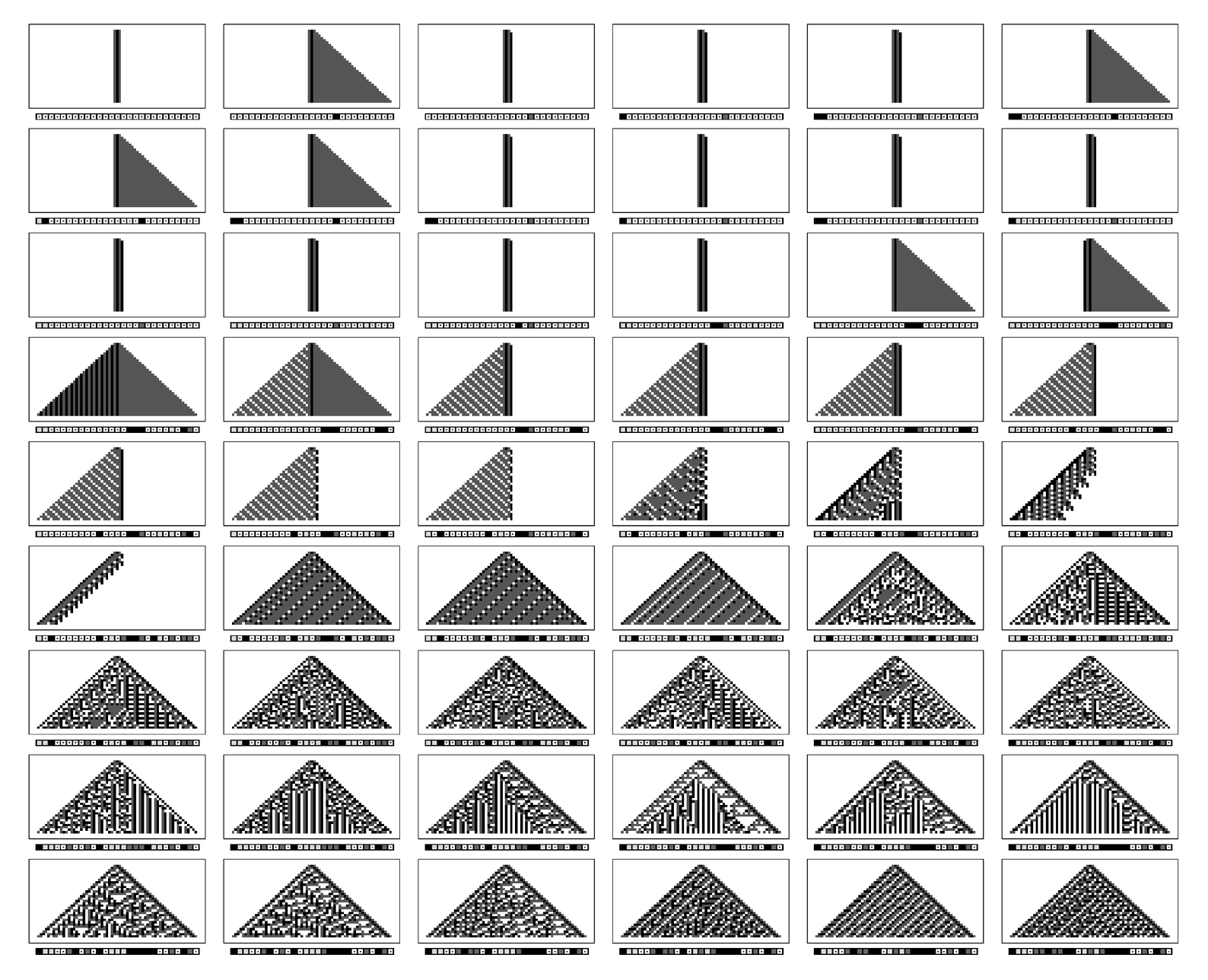But if complexity is this easy to get, why is it not even more widespread in biology? For while there are certainly many examples of elaborate forms and patterns in biological systems, the overall shapes and many of the most obvious features of typical organisms are usually quite simple.
So why should this be? My guess is that in essence it reflects limitations associated with the process of natural selection. For while

The behavior of a sequence of cellular automaton programs obtained by successive random mutations. The first program contains no rules for changing the color of a cell with any neighborhood. Mutations in successive programs add rules for changing the colors of cells with specific neighborhoods, or modify these rules. Each program in the sequence differs from the previous one by a single mutation, made completely at random. The sequence provides a very simple idealization of biological evolution without explicit natural selection. The cellular automata shown here all have 3 possible colors and nearest-neighbor rules. The label for each picture gives a representation of the rules for each of the 27 possible 3-cell neighborhoods. A dot signifies that the rule does not change the color of the center cell in the neighborhood.



